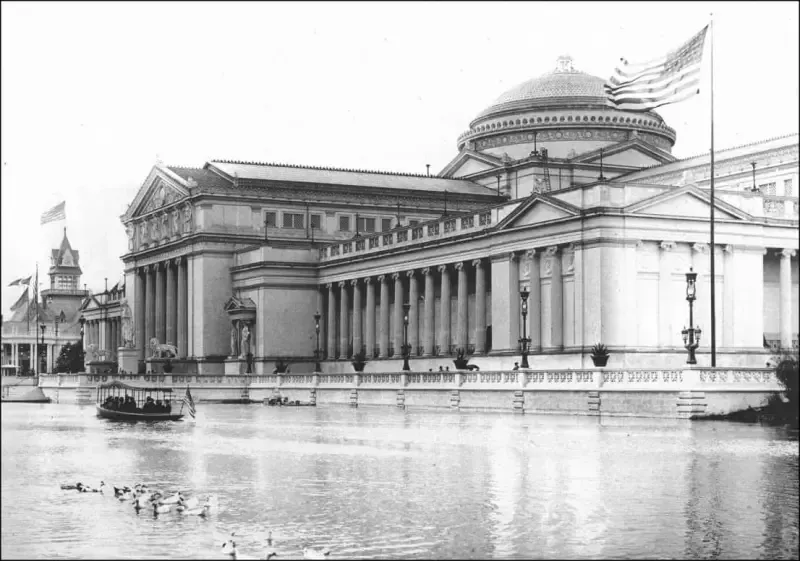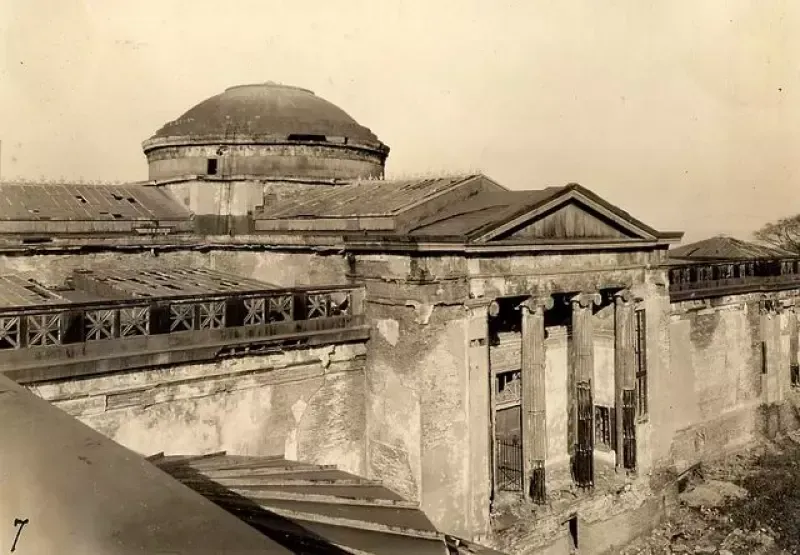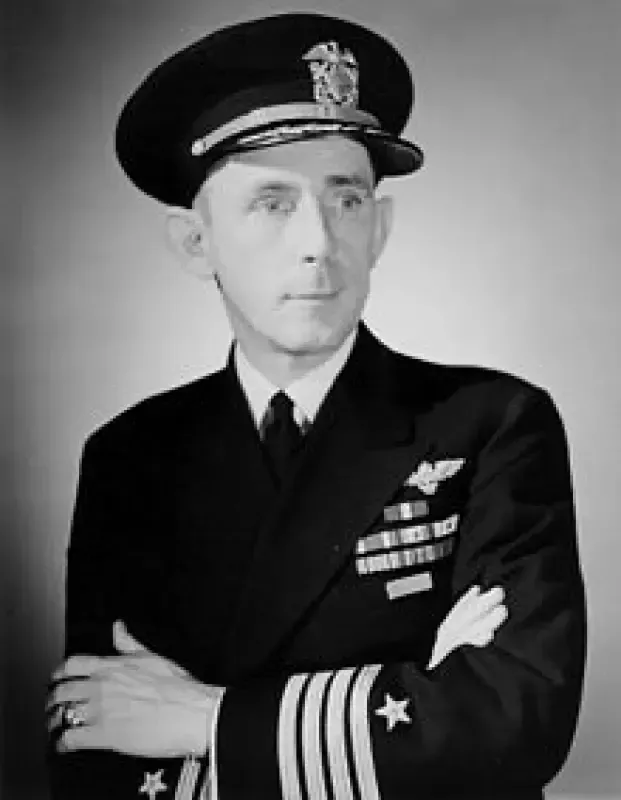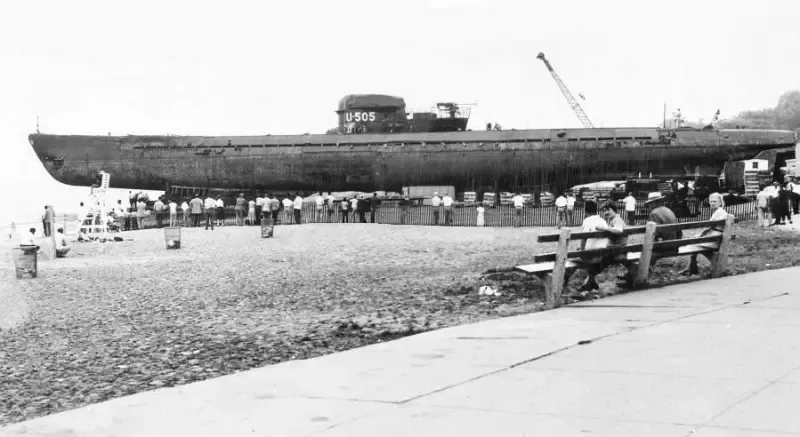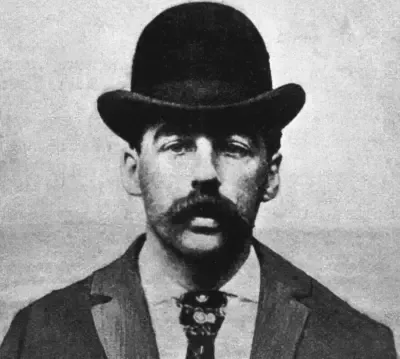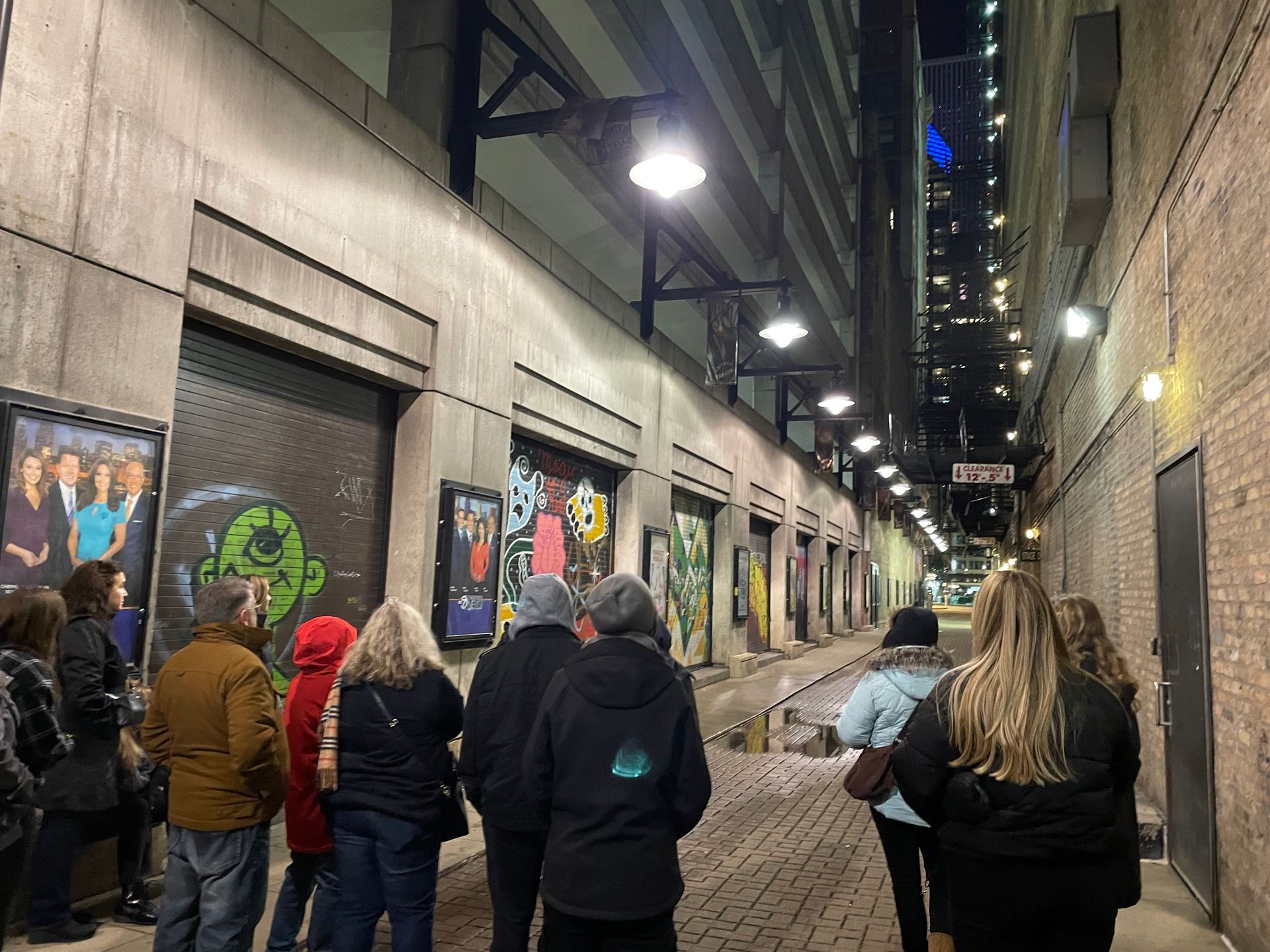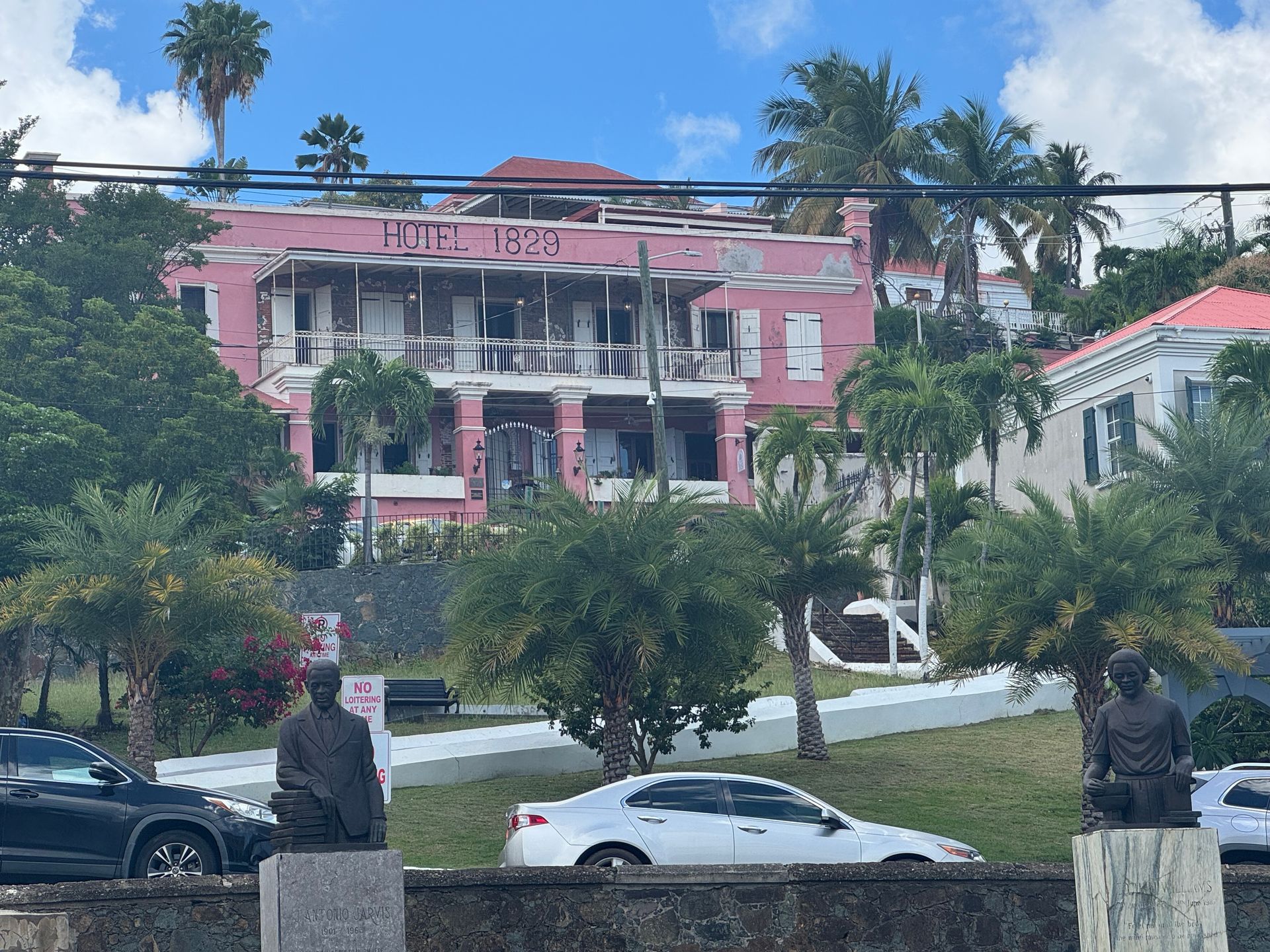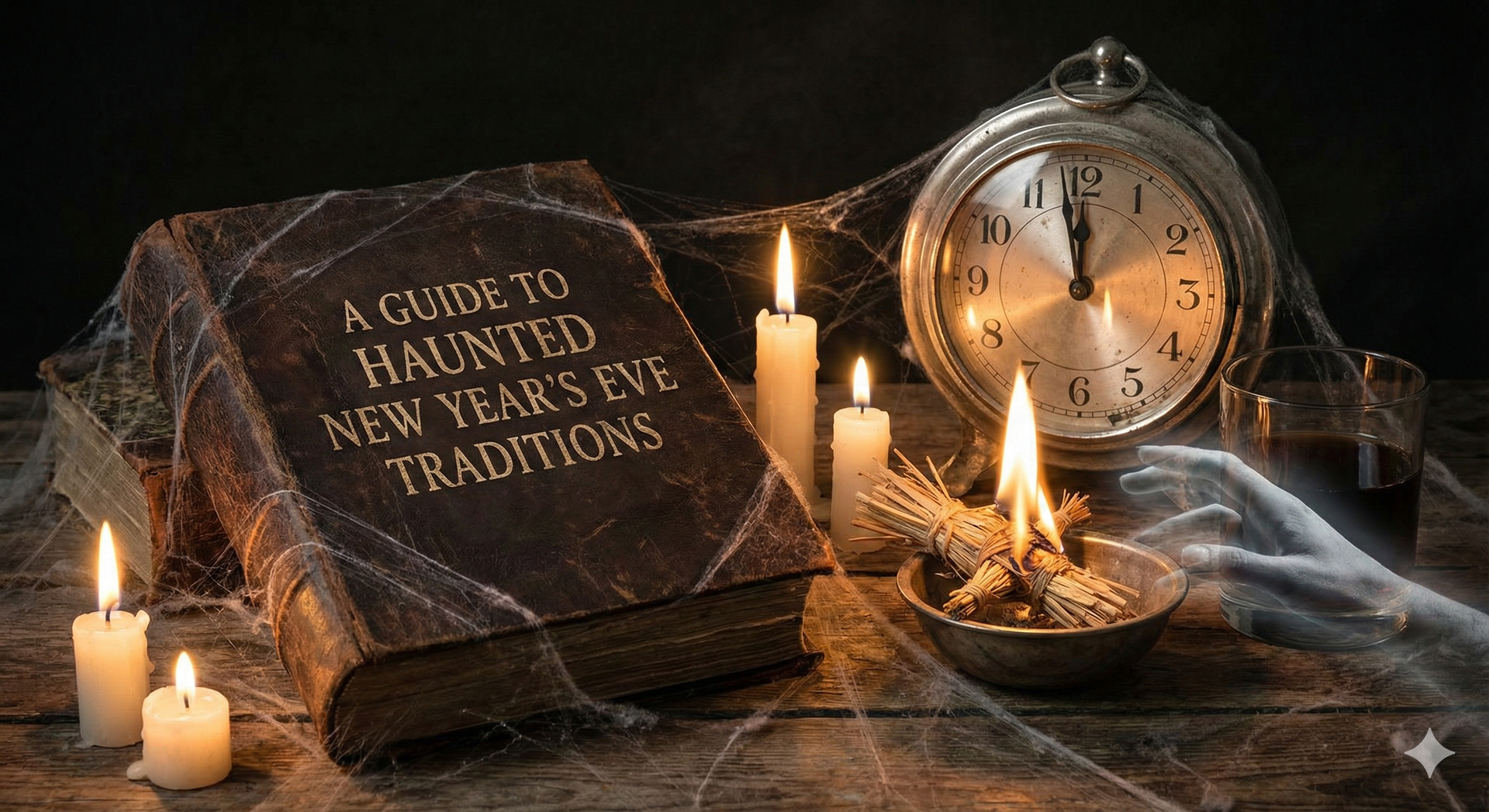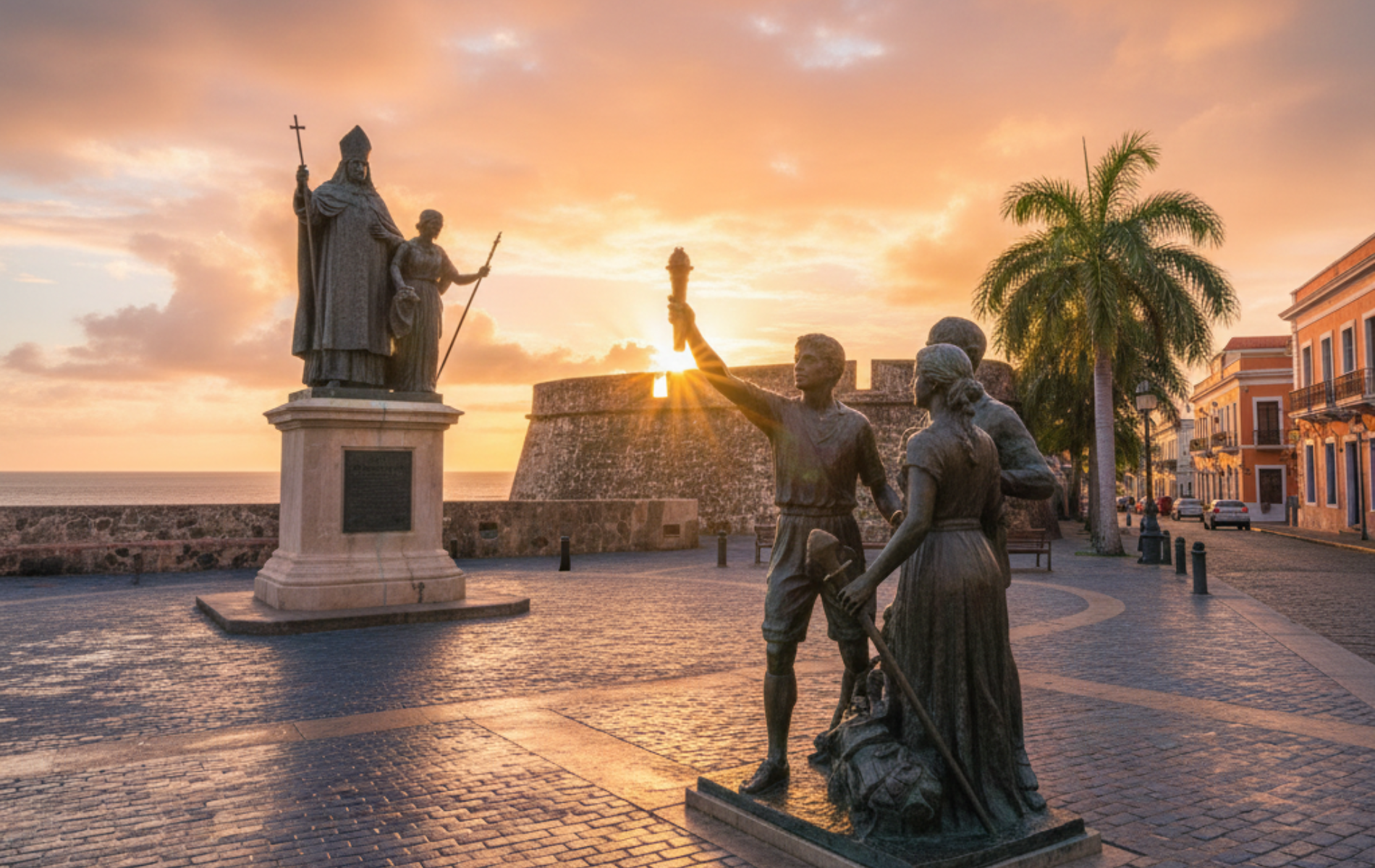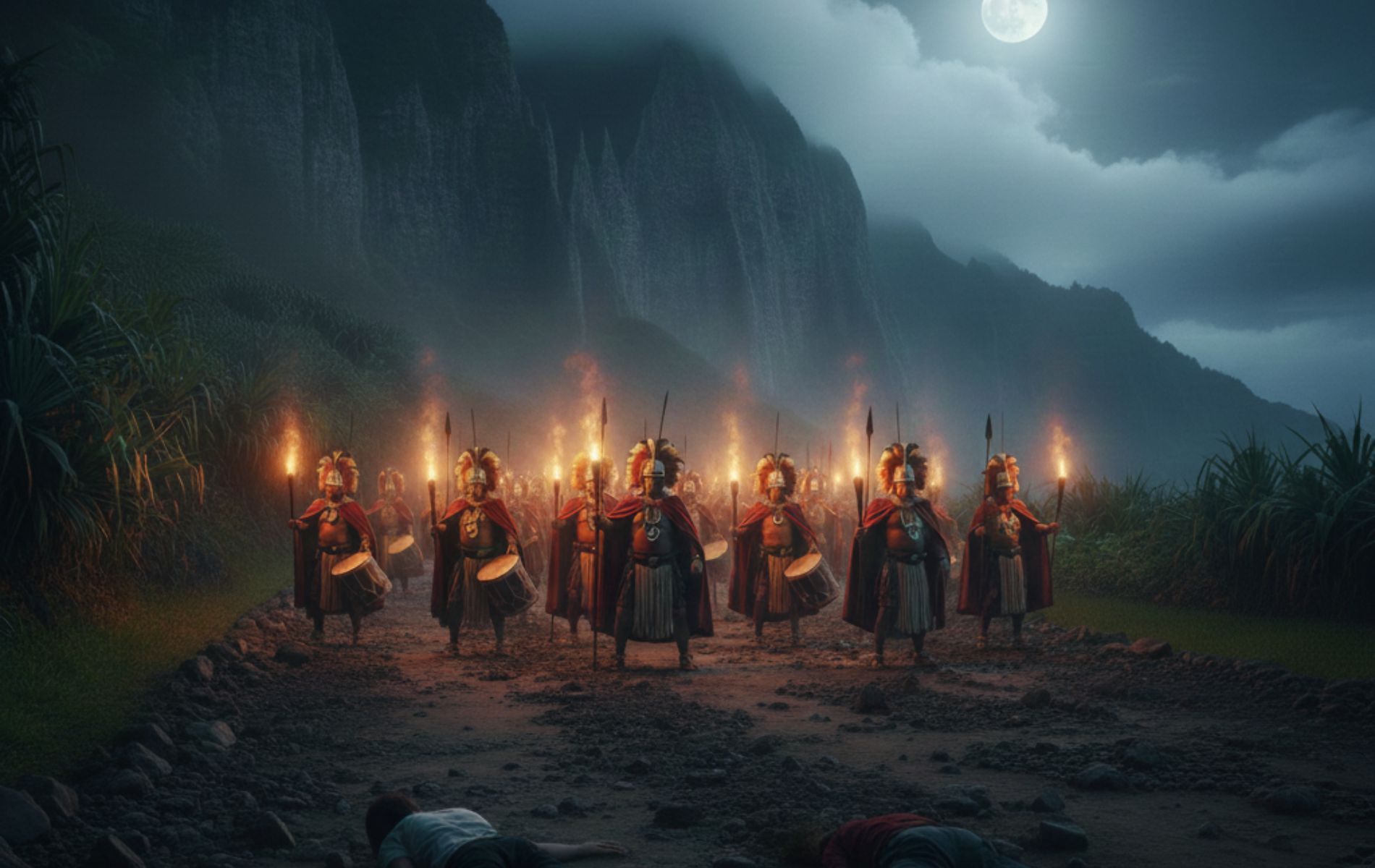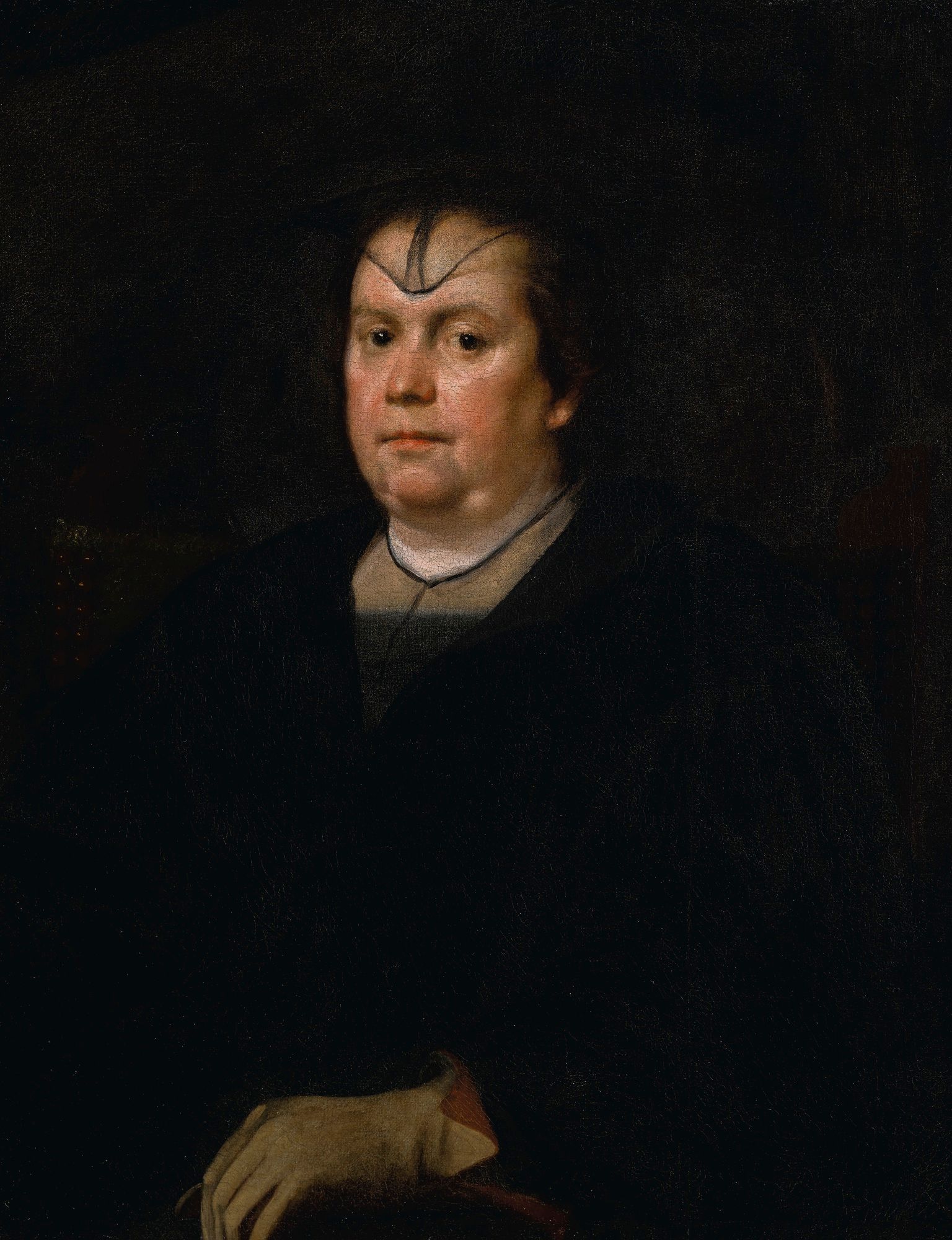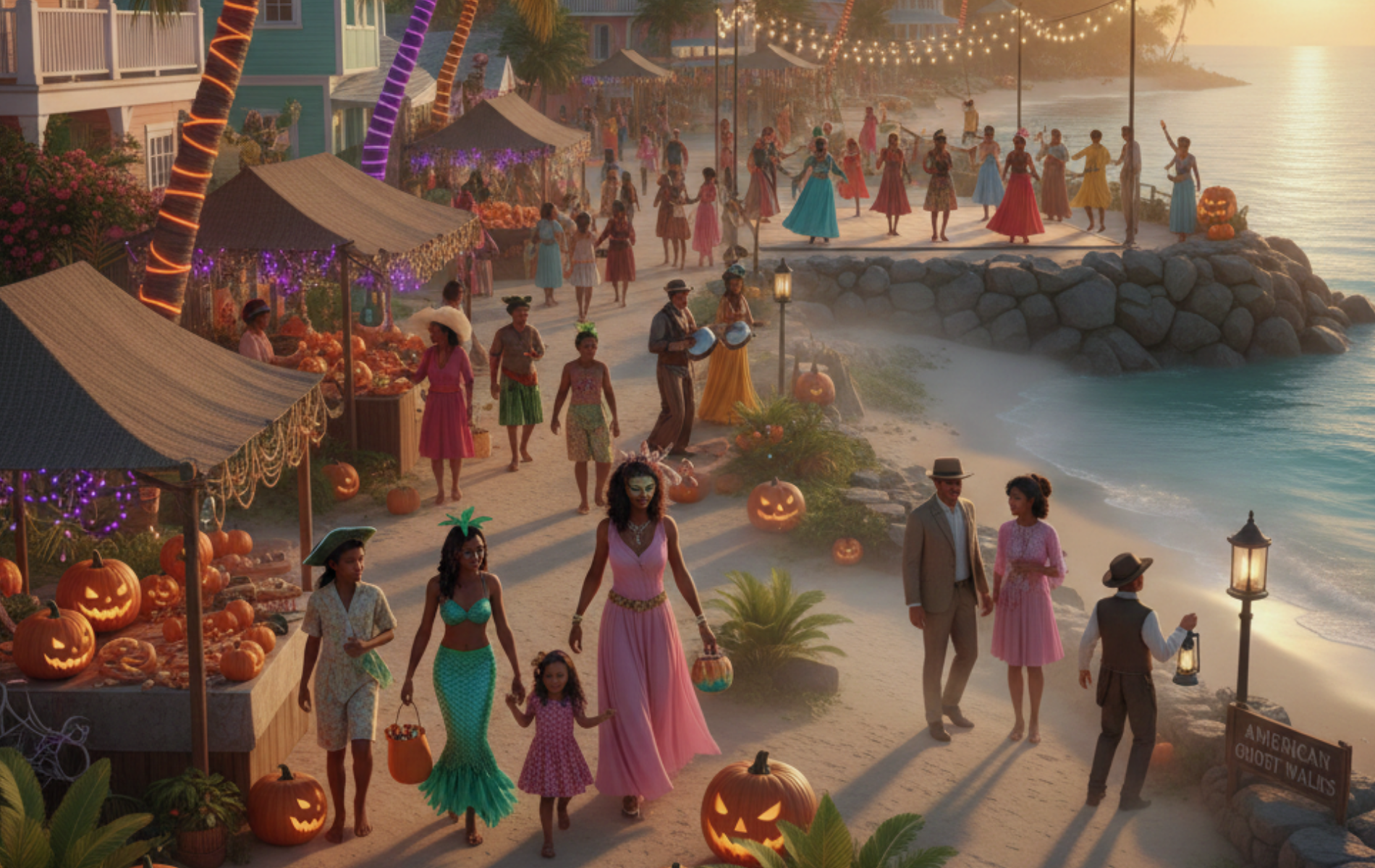Ghosts and Hauntings of the Museum of Science and Industry
Only one building remains standing on the old 1893 Fairgrounds in Chicago’s Jackson Park today: the former Palace of Fine Arts which now houses the spectacular Museum of Science and Industry. After the Fair ended the building first became the Field Columbian Museum, today’s Field Museum of Natural History.
While most of the Fair buildings—some of them much larger—were built of something called staff--a medium comprised of concrete, woven jute and plaster--,the Palace of Fine Arts had been built with a base of stone to protect the priceless masterpieces inside, which had come from collections around the world.
History of the Museum
When in 1920 the Field Columbian Museum moved into its new quarters further north, artist Lorado Taft led a movement to establish a new art museum in the old Palace of Fine Arts, featuring works of sculpture—his own medium. In fact, Taft had been the head of sculptural detail when the “White City” was created.
He and students from Chicago’s Art Institute worked around the clock to complete the buildings in time for opening day. Included among the artists was a group of female students known as the “White Rabbits, as Fair architect Daniel Burnham—in a panic because of the work left and the impending opening-- had instructed Taft to “hire anyone, even white rabbits if they’ll do the work!”
Despite much community and financial support for Taft’s vision, it was decided that a science museum would instead be created. This decision was largely made because Julius Rosenwald, then president of Sears, Roebuck and Company, pledged three million dollars to such a project after visiting the Deutsches Museum in Munich, The façade of the building was recast using limestone, the designers carefully preserving the 1893 heritage but creating an ultra-modern interior design.
When it opened, Rosenwald did not want his name on the building, but Chicagoans still called it the Rosenwald Industrial Museum. In 1928 the institution was christened the Museum of Science and Industry. Today, in our world of abbreviations, it is often called simply “MSI.”
Secrets Shared to Ursula When Telling Halloween Ghost Stories
Several years ago I was invited to tell ghost stories on the terrace of the Museum which overlooks the Jackson Park Lagoon, where the ghost of the great defense attorney Clarence Darrow’s ghost is said to walk. I was asked to tell that story and other popular ghost stories of Chicago, suitable for the children who were gathering for a pre-Halloween evening at the popular museum.
During the course of the evening, a security guard came up to me and pressed into my hand a piece of folded up paper. I looked up at him quizzically, and he just nodded. I unfolded the paper, and on it the guard had written, “They told us not to talk to you, but you need to call me.”
The next day I called the man, and he explained to me that the staff had been instructed not to share with me any of the strange happenings regularly experienced at the Museum, but that there were many that I “needed to know about” as a researcher of the Unexplained.
He told me about the ghosts of the Burlington Railroad’s Pioneer Zephyr, the beautiful diesel stainless steel train which was brought in for permanent exhibition and which still hosts sounds of hushed voices, laughter and music. My mother always talked about walking to the tracks in the evening with friends and siblings to wait for the beautiful Zephyr to come through like a rocket.
Later kids like me even remember the Zephyr ice cream parlor at Wilson and Ravenswood Avenues next to the tracks, a gorgeous Art Deco tribute to the train’s sophisticated era.
He told me about the apparition of a young girl seen in the Blue Stairwell, who lost her life several years ago while trying to slide down a railing.
He told me about the many appearances of Darrow’s ghost, both outside on the terrace and inside the building.
Figure Who Resembles Famed Chicago Killer H.H. Holmes
And he told me, most chillingly, about the bowler-hatted, mustachioed man seen walking the Yesterday’s Main Street exhibit: a gaslit, shadowy recreation of a turn of the 19th century street scene. That figure, the staff firmly believed, is the ghost of none other than serial killer H.H. Holmes, who would have walked very similar streets in his day—and the halls of this very building—during the World’s Fair of 1893.
Haunting of the U-505 U-Boat
Yet, no story in the museum is more notorious than that of the haunting of the U-505.
The U-505 was one of the terrifying German submarines (or U-boats) that ruled the seas during the early years of World War II. U-boats cruised the seas above the waterline, stalking merchant ships. Only after a sighting would the U-boat captain order submersion, in order to approach with stealth aided by periscope. Once the U-boat got close enough to attack, a torpedo was launched to sink the merchant ship by blasting a whole in its hull.
History of the U-505 U-Boat
After their introduction, U-boat attacks on merchant ships soon numbered in the hundreds, causing merchant crews to dread travel on the open seas. Allied merchant ships began to travel in convoys of up to two hundred vessels for protection, but a U-boat attack still called off all bets, disrupting a convoy’s formation and undermining the safety of all members.
Often, the convoys were escorted by powerful destroyers that would launch depth charges in response to U-boat offensives, but fear still reigned, as many deaths typically occurred during these exchanges.
Furthering the fear was Adolph Hitler’s response to the convoys, his own fleets of U-boats—the so-called Wolfpacks—sent to pummel the Allied convoys. In the worst scenario of the competition, March 1943 brought an attack by more than three dozen U-boats on more than a hundred Allied craft, resulting in the sinking of a fifth of the Allied vessels.
By the time of this attack, the American navy had had enough. As assaults increased, the Allies took action, forming the Hunter-Killer Task Groups to hunt and destroy the U-boats, ship by ship. The task groups restored a great deal of peace to the minds of Allied seamen, and their formation increased as the war progressed, aided by advances in anti-sub intelligence
One of the most effective Hunter-Killer Task Groups was 22.3, whose escorts included the aircraft carrier USS Guadalcanal, home base for fighter planes whose pilots spent their days at sea monitoring the waters for U-boats and alerting 22.3’s four destroyer escorts of the subs’ positions.
Commander of the Guadalcanal was Chicago native Captain Daniel V. Gallery, Jr., a decorated pilot whose elegant and forceful direction in an earlier task group had led to the sinking of the U-544, the U-68 and the U-515. While the sinking of the earlier U-boats had been a boon to the United States Navy and the Allies, Gallery had other plans for the new task group: capture an enemy sub.
If the navy were able to do it, such a capture would put into Allied hands priceless intelligence, including U-boat ammunition technology, insight into the Axis code system, ENIGMA, and precious communication logs. When the Guadalcanal set sail in the spring of 1944, capture was the mission.
The Tenth Fleet was the American antisubmarine intelligence command, headed up by Kenneth Knowles, and Gallery was debriefed by Knowles himself before setting out with Task Group 22.3. Knowles put Gallery and his group on the trail of a U-boat that had cast off two months earlier from France, headed toward the coast of Africa.
Task Group 22.3 bore for the Canary Islands on May 15, 1944, where Wildcat pilots joined the sea vessels in the hunt for the elusive sub. For nearly three weeks, search efforts dragged on, seemingly in vain; then, just as the search was abandoned, the destroyer USS Chatelain radioed sub contact… of the U-505.
Judging the sub’s location, the Chatelain unleashed two dozen Mark 4 hedgehogs, missing the target. While the destroyer prepared for a second launch, Guadalcanal fighters tagged the sub’s submerged location by firing rounds into the water. The Chatelain then fired more than a dozen Mark 9 depth charges— with success. Moments later, the sub burst to the surface.
Boarding the sub minutes later, the Allied boarding party worked against time to dismantle the scuttle charges, time bombs that would have been set by the crew during abandonment of the sub in order to sink the sub and prevent its capture. On the U-505, the crew had also tried to flood the ship by opening a pipe that allowed the inrush of water, but the boarding party was able to secure the opening and prevent further submersion of the craft.
While the boarding party carried out its dangerous work on the U-505, German sailors from the sub were rescued by Task Group 22.3 and taken prisoner aboard the Guadalcanal to await transport to a POW camp in Louisiana where they would remain until the end of hostilities.
Finally, the American crews prepared for the overwhelming task of towing the semi-submerged U-505 to Bermuda—under United States Naval orders.
Though the sub eventually toured American cities as part of a bond drive, its days were numbered. After picking the sub apart for intelligence’s sake, the U.S. Navy slated the sub to be employed in target practice, but retired Commander Daniel Gallery, as usual, had other plans.
Still moved by the import of the U-505—and his own experiences of its capture—Gallery sought the sub’s survival and aimed to bring it to his own city of Chicago for permanent exhibition. Gallery found open ears to his plea at the Museum of Science and
Industry, an astounding Chicago institution housed in one of the sprawling exhibit halls of the 1893 World’s Fair. Then-president of the museum, Lenox Lohr, shared Gallery’s hopes of acquiring a submarine for his inimitable museum, and he quickly approached U.S. Naval authorities with their desire for the U-505. The navy approved but would not front the monstrous expense of the actual transfer—a quarter of a million dollars.
Almost miraculously, the City of Chicago and the Museum of Science and Industry joined a slew of private organizations and individuals to raise the needed funds, and on May 15, 1954, exactly ten years after Task Group 22.3 had left port to find it, the U-505 began the long tow from Portsmouth to Chicago, where it took more than a week to haul it out of Lake Michigan, across Lake Shore Drive, and across the museum’s great front lawn of Jackson Park. That fall, the U-505 became a memorial to the fallen of World War II; soon, it would obtain the status it retains as one of the museum’s most popular exhibits.
U-505 Exhibit in the Museum
When it was first installed as an exhibit, the U-505’s home was actually outside the building, and visitors accessed the craft from an exhibit hall passageway inside the museum. Half a century of brutal, lakefront weather, however, took its toll, and in 1997, curators decided the sub would have to be moved indoors to remain safe for boarding.
After two years of repairing and refurbishing the U-505 with the aid of antique photographs and eyewitness memories, the unthinkable task of moving the sub was again at hand. Luckily, experienced NORSAR signed on for the job, designing an elaborate system of dollies and jacks for the move into the museum and down into the U-505’s new, underground exhibit hall. But is all quiet on deck?
Nein.
Since its arrival at the museum, staff and visitors have been aware of an unseen sailor on the submarine. Surprisingly, the invisible crew member is not believed to be one of the vanquished of the infamous capture but former Commander Peter Zschech.
In October 1943, a year before its capture by Task Group 22.3, the U-505 found itself enmeshed in battle with an Allied destroyer hailing from Britain, which attacked the sub with numerous depth charges. Believing his ship was near the end, Zschech took his own life, shooting himself in the head with his pistol as he stood, white-faced, at the controls.
Even more horrifically, the shot hadn’t instantly killed him, and as Zschech lay on his bunk, crying out, crew members muffled his cries with his pillow, to keep his voice from detection by the enemy and, as the men admitted, to quicken the inevitable end.Docents and security guards have both experienced unseen forces on the sub.
In 2005, one security guard told of hearing voices on the U-505 every single night she was on duty, and another reported sightings of a most unusual sort: the apparition of legs, feet, or shoes in the door of the commander’s cabin, and the strong feeling of being watched while inside the room.
Interestingly, in his autobiography, U-505 submariner Hans Goebler writes that it was only when the crew saw the “lifeless legs” of Zschech being “dragged into the Olymp, our nickname for the area around the Skipper’s cabin” that they “realized that something was very, very wrong.”
“As Zschech lay on his bunk, crying out, crew members muffled his cries with his pillow, to keep his voice from detection by the enemy and, as the men admitted, to quicken the inevitable end. ”
Author and ghost hunter John Kachuba visited the museum before the move of the U-505 and discovered that, while on the sub, one docent had felt an invisible presence attempt to enter his own body. Kachuba described his U-505 visit in Ghosthunting Illinois , noting that
Female docents especially seem to be having a tough time with the commander’s ghost. One young woman had just made a rather insulting joke about the commander… when a steel door suddenly slammed closed on her hand, injuring her. Another woman felt a hand come out of nowhere and grasp her shoulder. Of course, there was no one else in the room.
Before the move of the U-505 to its new site inside the Museum of Science and Industry, I spent many hours inside the sub, talking with guards and docents and taking environmental readings of the interior. Unusual effects abounded, from skewed compass readings in the 1980s and, later, spikes on my EMF meter to inexplicable pounding sounds and indistinguishable whispers near the commander’s cabin.
Since the opening of the new exhibit hall and the refurbishing of the U-505, I’ve made several trips to see the sub in her new digs. Discreetly brandishing my digital thermometer, I was lucky enough to capture a fourteen degree temperature drop in the doorway of Zschech’s old cabin, a change not tremendously impressive but, indeed, totally inexplicable. I was also fortunate in another respect.
During one of my visits, I was the only visitor on the sub, so I was able to make a reasonable attempt to collect samples of EVP (Electronic Voice Phenomena) or possible spirit voices. Throughout the sub, I asked standard questions, such as “What is your name?” “Where are we?” “What year is it?“ and “What time is it?”
Well, they say the third time’s the charm, and on the third try of the latter question, outside one of the bunks, I got the most distinct EVP answer of my twenty-year career. I am familiar with simple German phrases, as my daughters attend the Saturday morning German language school at Chicago’s D.A.N.K. Haus in Lincoln Square, and so, later when I played back the tape I’d made on the U-505, I was quick to decipher the clear words of a slow, low, male voice affirming, “einundzwanzig hundert,” that is, “twenty-one hundred.”
No small matter. At just after 21:00 hours on October 24, 1943, a blunt entry was made in the U-505’s logbook, stating only “Kommandant tot,” that is, “Commanding Officer dead.”
A few hours later, just before dawn according to the privately published autobiography of U-505 crew member, Hans Goebler, “Zschech’s body was lifted up to the bridge and dropped over the side without ceremony. We continued running on the surface at high speed in order to put as much distance between us and the destroyers as possible.”
Though the days ahead were racked with additional depth charges and close-calls, Zschech’s first officer, Paul Meyer, was able to save the U-505, maneuvering it out of Allied view. On the morning of November 7, the U-505 surfaced and entered Lorient Harbor—and safety. “As we entered the harbor,” writes Goebler, “…we fell out to assemble on bent knee on the upper deck… It was quite an experience… We had made it home, all of us, safe and sound. All, that is, except one.”
Though the men under Zschech’s command admitted little sorrow at the incompetent commander’s passing, the pall of his end has ever hung over the craft. Goebel writes:
I was never one to be frightened much by superstitions, but whenever I passed Zschech’s cabin, I got goosebumps. We kept the curtain to his cabin closed, and no one had dared to enter it since the day of his suicide. Even Oberleutnant Meyer felt more comfortable staying in his junior officer’s bunk. Seeing that closed curtain reminded me of the way Zschech would hide in his cabin, alone with his tortured thoughts. It was as if his ghost still haunted the little room.
Dive deeper into the mysterious world of hauntings with our curated collection of paranormal investigations and ghostly encounters. Read more stories like this in “Ghosts of Lincoln Park: A Chicago Hauntings Companion” by Ursula Bielski, a book of downtown Chicago ghost stories written by our own American Ghost Walks team. Click here for more.
Dive deeper into the mysterious world of hauntings with our curated collection of paranormal investigations and ghostly encounters. Read more stories like this in “The Original Chicago Hauntings Companion” by Ursula Bielski, a book of Chicago ghost stories written by our own American Ghost Walks team. Click here for more.
Are you fascinated by the supernatural and craving more spine-tingling tales? Whether you're a skeptic seeking evidence or a believer looking for your next supernatural fix;
"American Ghost Books" offers everything from historical haunted locations to firsthand accounts of paranormal experiences. Each book has been carefully selected to provide authentic, well-researched stories that will keep you turning pages well into the night. Don't let your curiosity about the supernatural remain unsatisfied – explore our collection and find your next ghostly adventure today!

